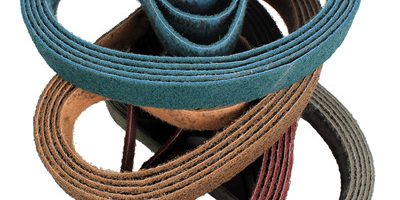Sanding belts are essential tools in various industries, from woodworking to metalworking, and understanding the science behind their materials and abrasives can help you make informed choices for your projects.
Abrasive Materials: The abrasive material on sanding belts plays a crucial role in their effectiveness. Common abrasive materials include aluminum oxide, zirconia alumina, and ceramic. Each material has distinct properties that make it suitable for specific applications. Aluminum oxide is a versatile choice for general-purpose sanding, while zirconia alumina offers greater durability and performance. Ceramic abrasives excel in high-pressure applications and can withstand heat better than other materials.
Backing Material: The backing material of a sanding belt provides support and stability to the abrasive layer. Common backing materials include cloth, paper, and polyester. Cloth backings are flexible, making them ideal for contour sanding, while paper backings are more rigid and suitable for flat surfaces. Polyester backings offer durability and stability, making them suitable for heavy-duty applications.
Grit Size: Grit size is a crucial factor in achieving the desired finish. Lower grit numbers (e.g., 40 to 60) are suitable for heavy material removal, while higher grits (e.g., 120 to 240) are ideal for fine finishing. Understanding the role of grit size and selecting the appropriate grit for your project is essential for achieving the desired results.
Belt Construction: Sanding belts come in various constructions, including open-coat, closed-coat, and semi-open coat. Open-coat belts have fewer abrasive particles per square inch, which reduces clogging but may result in a less smooth finish. Closed-coat belts have a higher particle density and provide a smoother finish but are more prone to clogging. Semi-open coat belts strike a balance between the two.
Conclusion: Understanding the materials and abrasives used in sanding belts is crucial for selecting the right belt for your specific project. By considering factors such as abrasive material, backing material, grit size, and belt construction, you can make informed choices that lead to efficient and effective sanding results.










